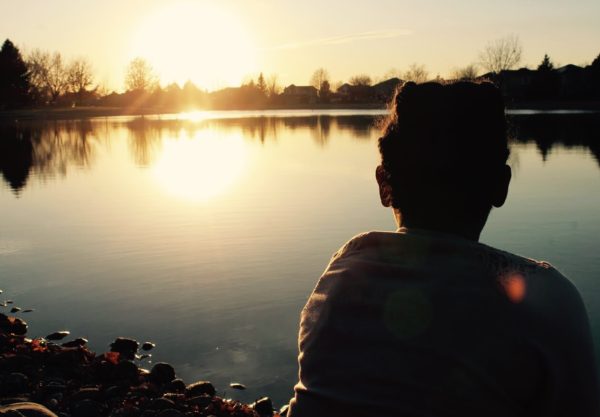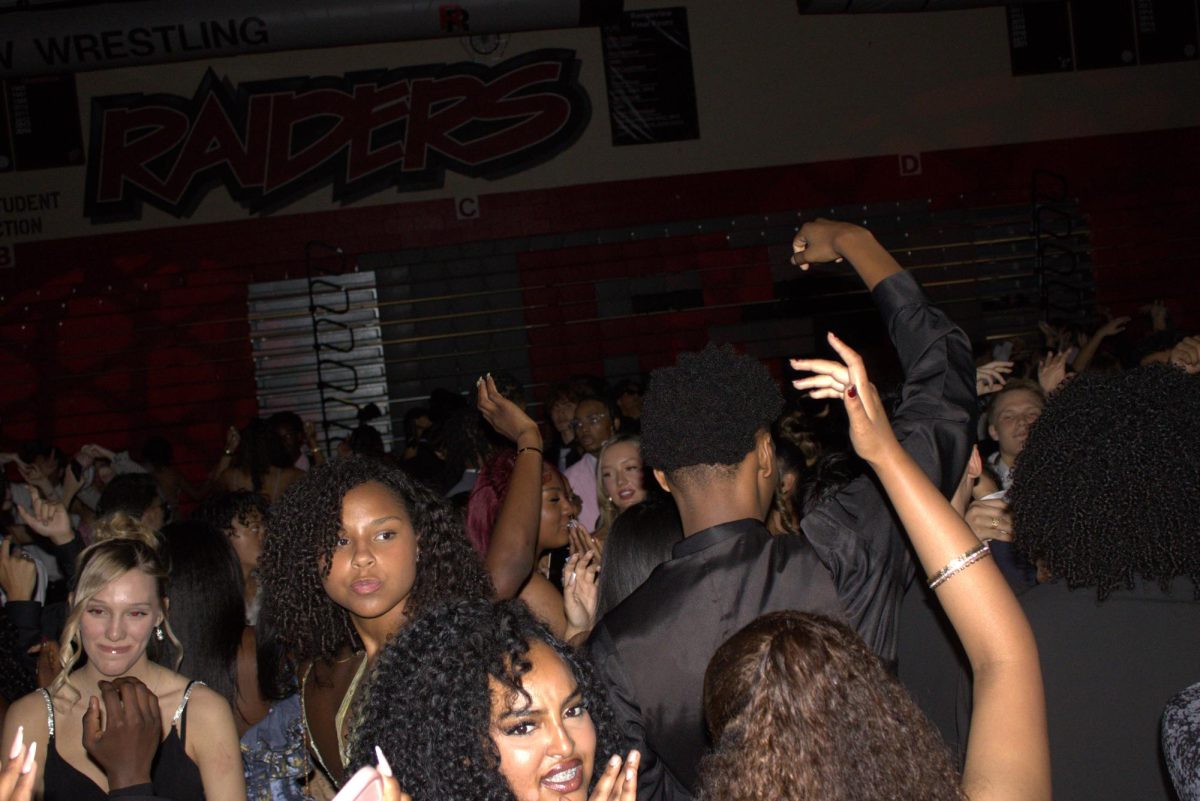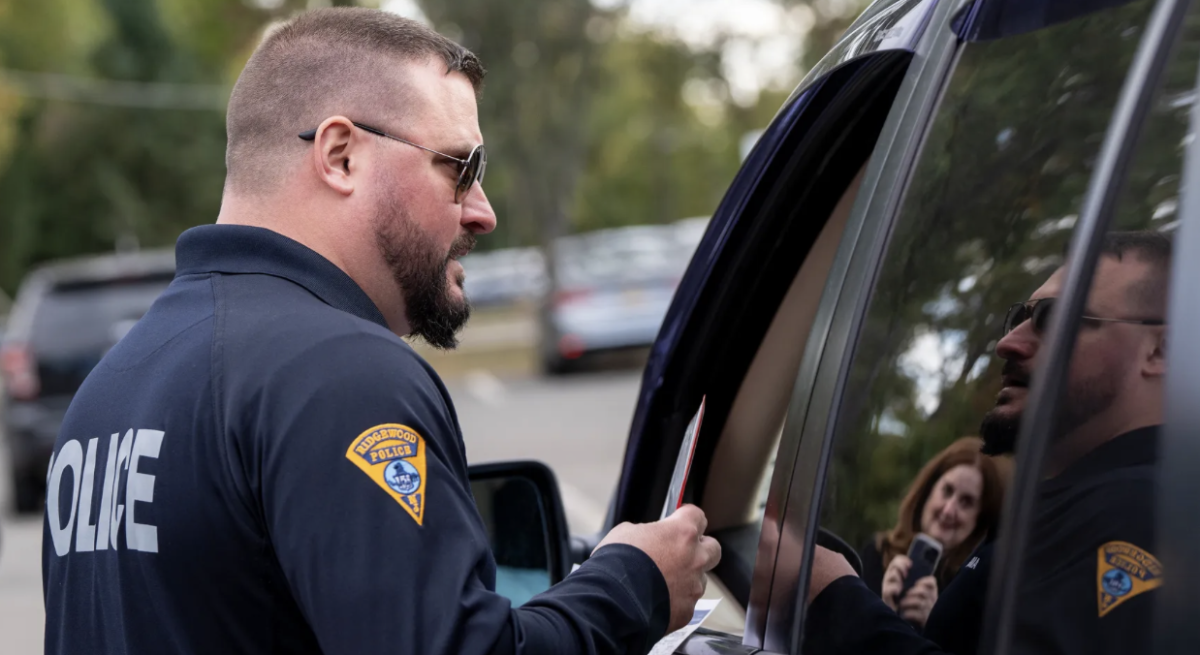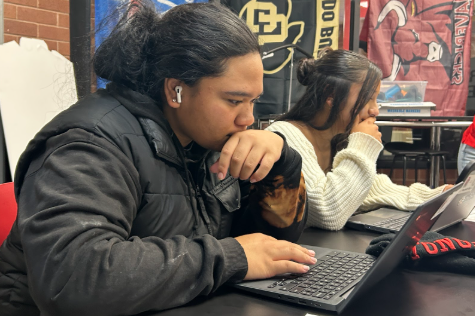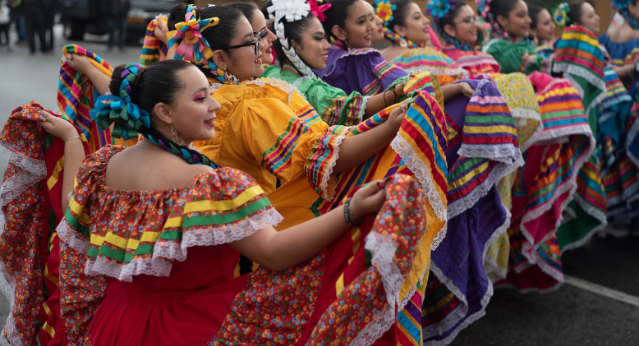Feature photo by: Savannah Lyman- A teenager is seen watching the sun set after walking home from school. Teenagers are the main targets when it comes to sex traffickers finding their victims.
Imagine the girl you used to sit next to in geography class. Remember how sweet and helpful she was? Well all of a sudden she becomes less joyful and eventually begins missing a lot of school. Although she may have crossed your mind a couple of times, you never went out of your way to check in on her. Little did you realize, your old geography partner became a victim of the American sex trade.
Sex trafficking is one of the highest, most successful businesses in America, making approximately $150 billion dollars a year. 300,000 of these victims are under the age of 18. Sex trafficking is when females of all ages and ethnicities are sold as sex slaves in exchange for money, and it happens everywhere, including right here in Aurora. (http://time.com)

A Rangeview student’s experience:
Editor’s note: Names have been changed in order to protect the identities of those whose stories have been mentioned.
“It’s scary,” says Lisa, a current student here at Rangeview speaking on behalf of her family member. “Her mom told me she
tried calling Danielle. After weeks of not hearing from her, we finally got in contact with her. A man took the phone away and started yelling at her mom. He told her that he was taking care of Danielle and she needed to stop calling. All I know is he’s 45 years old and she barely turned 18 a month ago.”
Danielle’s behavior began to take a toll on Lisa’s family. No one really knew where she was and what she was up to.
“She was scary intelligent. She used to have the goofiest personality, she always lit up the room with how bright she was. In elementary school they would always want her to skip a grade every year. I noticed changes in her behavior once freshman year began.”
Lisa noticed Danielle would continuously ditch school and was always surrounded by people way older than her.
“The last time I saw her she looked pretty messed up,” says Lisa. “I could tell she was taking a serious amount of drugs. I have no clue if she is being sexually abused but, to be honest, it wouldn’t surprise me. She was definitely pressured into this life and she’s too scared to leave it.”
Danielle began stealing money from her mom and shoplifting from stores.
“Danielle has always been the black sheep in our family,” she said. “Her parents treated her as if she wasn’t worth the attention and she went to find love and acceptance by dangerous people. To her it wasn’t dangerous, she isn’t aware of the damage she’s doing. She just wanted to be loved. It’s sad because nobody can save her until she realizes she needs saving.”
Police have been notified on the issues surrounding Danielle; Lisa has yet to hear an update from her family members.
Who is affected by sex trafficking?

Within the walls of a sex trafficking ring, victims are coerced into fulfilling sex acts while someone else receives money. These victims are branded and ultimately become someone else’s property.
Not only are females a target for many of these perpetrators, but males are as well.
According to humantraffickingcenter.org, 42% of these victims are male. As shocking as that may seem, male victims are often overlooked by the media.
“[Sex trafficking] is not really focused on today’s society,” says junior Jenine Abdelsalam. “I think we can be more aware and improve awareness.”
How do sex traffickers find their victims?
Sex traffickers find their victims through many resources. More often than not, victims are targeted through social media such as Facebook or Instagram. 76% of these victims were found from their social media accounts. (Arkofhopeforchildren.org)
“Social media makes it much easier for traffickers to target multiple possible victims at once,” says officer Condreay. “Traffickers know far more about juveniles because of their social media, so it is easier to target based on this knowledge.”
Sex traffickers lure young girls and boys by making them empty promises of a better life filled with fame and money. Traffickers also take advantage of runaway children and many times even their own foster kids. 86% of victims were traded in from the care of their own foster parents. (missingkids.org)
“This is a complex issue and there are many reasons this occurs in society,” says Condreay. “No school across the U.S. is immune to it.”
One in three runaways are found and recruited within the first 48 hours of leaving home. (Streetshope.org)
“Students who feel isolated, different from others and often have low self esteem, can be easy targets for sex traffickers,” says Condreay.
Statistics:
Facts: arkofhopeforchildren.org
- 1.5 million people are involved in sex trafficking

A man and a women wait for their bus to arrive. Many victims are under the age 18 but victims can be of all ages. (Savannah Lyman) - Two million children are victims of sex trafficking
- Victims are physically and mentally abused repeatedly
- Some kids are sold into slavery by their own family members
Physical effects:
- Sleeping and eating disorders
- Emotional abuse
- Fear, anxiety, and depression
- HIV/AIDS/ other sexually transmitted diseases
Facts: www.dosomething.org
- The cost of a slave is approximately $90
- There are over 20 million sex slaves in the world
- 11.4 million women are trafficked
- 9.5 million men are trafficked
- 600,000-800,000 men and women are brought over borders into the USA every year and are trafficked
- 50% who are put in sex trafficking are children
“It’s somebody’s life and you can’t take possession of it,” says senior Matthew Lopez. “ A person of our community shouldn’t be apart of this…we can put this situation more in the spotlight so that we are more aware of it.”
How does this affect Rangeview?
Rangeview students are not excluded from becoming potential targets, as said by Condreay.
“There are likely students who are enrolled at Rangeview who have been targeted either in the past or currently and will be targeted in the future,” says officer Condreay. “A lot of students may not even be aware they have been targeted or are too uncomfortable to report it. Sadly for the past several years there has been at least one every school year.”
How to read the signs of someone who might be involved in sex trafficking: polarisproject.org
- They appear to be anxious, depressed, submissive, tense, or nervous
- After talking about law enforcement, they become anxious and nervous
- They avoid eye contact
- They lack personal hygiene
- They show signs of physical and/or sexual abuse, confinement, or torture
- Inability to clarify where they are living
- Loss of sense of time
- Has numerous inconsistencies in their story
“Make our staff aware when you see concerning behavior of students and friends,” says Condreay. “Gradual but big changes in behavior (missing a lot of school, running away from home repeatedly, hanging out with inappropriate adults, change in the way they dress). When you see someone who seems to be disconnected (isolated) and possibly depressed, reach out and try to offer support and let staff know.”
If you or someone you know might be involved in sex trafficking call the National Human Trafficking Resource Center 1 (888) 373-7888 or click here.
